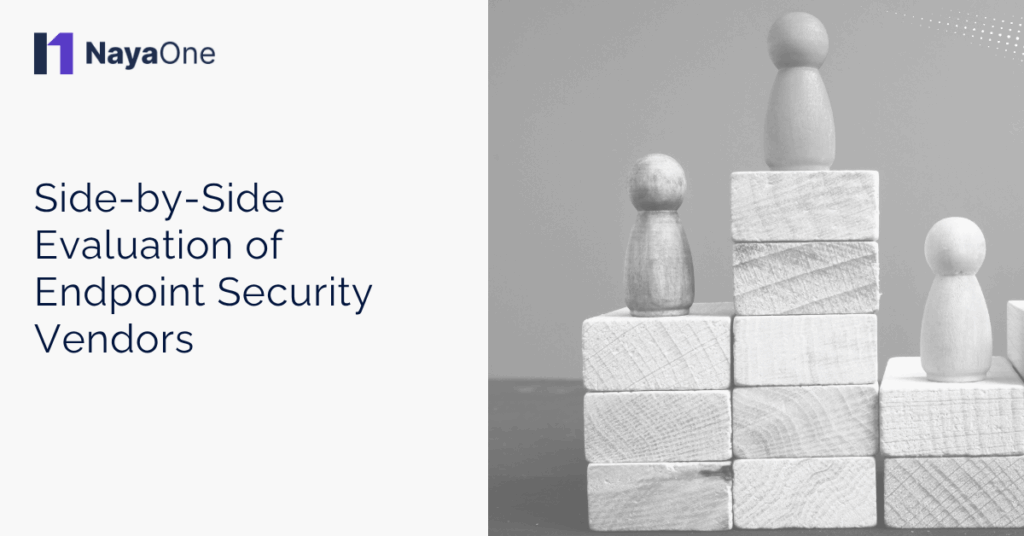Overview
- Major commercial financial institution
- Assets: $800B+
- Branches: 500+
Challenge
The bank’s existing endpoint protection was complex, slow to detect threats, and left devices vulnerable to advanced cyberattacks. Internal policy required a multi-vendor PoC, but traditional testing would take months, delaying security improvements.
Solution
Using NayaOne’s secure, disconnected Cybersecurity Lab, the bank deployed 16 test endpoints – four per vendor and four unprotected controls – and simulated malware attacks. All vendors were onboarded and ready for testing within two weeks, enabling concurrent evaluation without risk to live systems.
Results
- 3 LLMs evaluated within 4 weeks
- Improved detention rates
- 40% reduced incident response time
Closing the Endpoint Security Gap
The financial institution faced a critical technology decision: selecting a new enterprise endpoint protection provider to safeguard thousands of devices across its banking ecosystem.
The bank’s security leadership team – including the CTO, CISO, and COO – was concerned about an increasing vulnerability to cyberattacks under the existing provider. The current endpoint protection solution was complex to manage, difficult for teams to operate effectively, and often slow in detecting threats. These delays in identification increased the potential for damage and heightened the bank’s risk exposure.
In line with internal security policy, any such high-stakes technology change required a multi-vendor proof-of-concept (PoC) before approval. The process needed to not only identify the most effective tool for preventing advanced cyberattacks but also evaluate operational efficiency, ease of deployment, and regulatory compliance.
Historically, running a multi-vendor PoC for endpoint protection was a long and resource-intensive effort – often taking several months to coordinate across vendors, legal teams, procurement, and IT operations. In a threat environment where cyberattacks evolve daily, such delays posed a direct risk to the bank’s security posture
Concurrent, Controlled Vendor Testing
The bank selected NayaOne to expedite the endpoint protection evaluation process while ensuring rigorous, safe testing conditions. NayaOne’s platform provided a secure, disconnected testing environment – completely isolated from live systems — enabling safe simulation of advanced cyberattacks without the risk of impacting production environments.
Within just two weeks, all shortlisted vendors were provisioned inside the Cybersecurity Lab, along with fully functional endpoint environments ready for testing. The setup included:
- 16 endpoints in total
- 4 endpoints per vendor, with each endpoint configured for real-world usage scenarios
- 4 unprotected endpoints to act as controls for comparative testing
Using this configuration, the bank’s security team simulated targeted malware attacks on each vendor’s toolset. The tests measured threat detection speed, automated response effectiveness, ease of remediation, and resource impact. Because all vendors were available in the same environment, the evaluation was conducted concurrently, eliminating months of serial testing and coordination.
Rapid Time-to-Decision
Enhanced Security Posture
The evaluation led to the selection of an endpoint protection tool that demonstrated superior threat detection and automated response capabilities. This reduced the window of vulnerability and strengthened the bank’s overall security posture against advanced cyberattacks.
Operational Efficiency
Running the multi-vendor PoC in NayaOne’s lab removed the logistical bottlenecks of traditional testing. IT and security teams could focus on strategic analysis rather than lengthy setup and coordination tasks, freeing resources for other critical initiatives.
Regulatory Compliance
By validating endpoint protection tools in a secure, controlled environment, the bank met internal and industry data protection standards while avoiding the operational risk of testing in production. The chosen solution also aligned with broader compliance requirements, helping mitigate the risk of regulatory penalties.
Speed to Decision
What had traditionally taken several months was completed in just two weeks from setup to results – enabling faster procurement, quicker implementation, and reduced exposure to known endpoint vulnerabilities.


